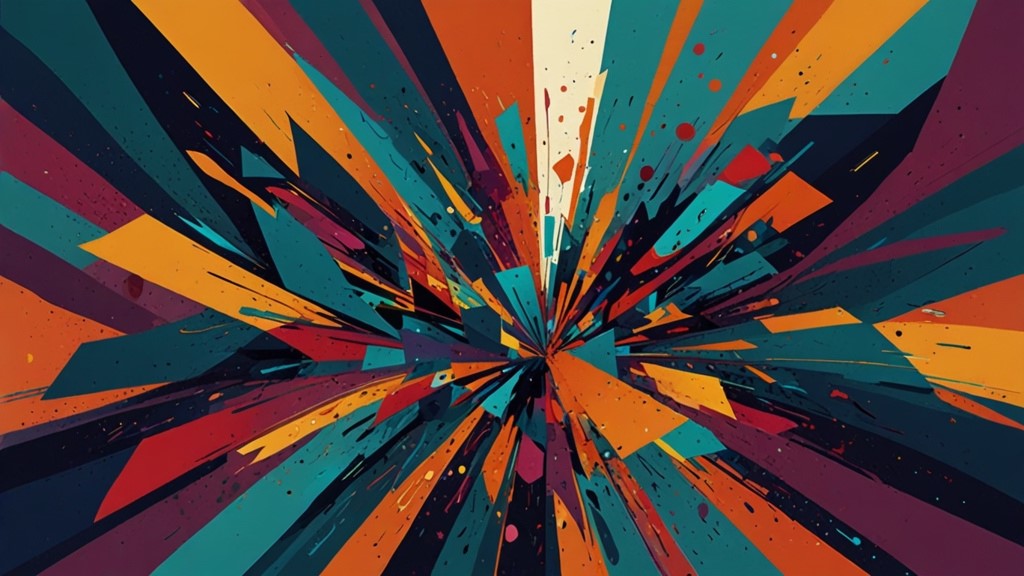Description
1. Introduction to Custom 3D Model Creation Services
Custom 3D model creation services have rapidly gained traction, largely due to the growing need for visual assets that enhance user experiences across digital platforms. These services provide businesses and individuals with the opportunity to commission bespoke 3D models tailored to their specific needs. Whether it’s a virtual environment, a character for a game, or a product prototype, these models are built to precise specifications, ensuring that clients receive a unique, high-quality product.
What differentiates these services from traditional 3D art services is their accessibility through online platforms. The convenience of submitting project details, collaborating with professional 3D artists, and receiving finished models—all through an internet service—has made custom 3D modeling more accessible than ever before.
2. Importance of 3D Models in Modern Applications
Before delving into the specifics of online custom 3D model creation services, it’s important to understand why 3D models are in such high demand across industries. The versatility of 3D models has allowed them to become integral in fields like gaming, e-commerce, architecture, medical imaging, film, and even education.
Gaming and Entertainment
In gaming, 3D models are used to create characters, weapons, environments, and entire virtual worlds. The detailed and immersive nature of these models is critical for modern games, especially as players demand more realistic and engaging experiences. In film and television, 3D models are used to generate lifelike CGI effects, animate non-existent creatures, or create entire digital environments.
E-commerce
E-commerce has also seen a significant rise in the use of 3D models. By offering interactive 3D product models, online retailers can provide consumers with a better understanding of the products they are buying, which reduces return rates and improves customer satisfaction. This is particularly beneficial for furniture, electronics, and apparel, where visualizing the product in 3D offers a closer approximation to the real-life item.
Architecture and Real Estate
For architects, real estate agents, and interior designers, 3D models allow clients to virtually walk through a space before it is even built. These models help visualize complex architectural plans and improve communication between clients, engineers, and builders.
Medical Industry
In the medical field, 3D models of organs, bones, and tissues help surgeons plan complex surgeries and give patients a better understanding of procedures. Moreover, these models are now being used in training simulations for medical students.
3. The Process of Creating Custom 3D Models Online
The online custom 3D model creation process involves a few essential steps, designed to ensure that clients receive a model that meets their exact needs.
Step 1: Client Briefing
The process begins with a client briefing, where the client provides detailed information about the model they want. This can include specific dimensions, styles, textures, and any functional requirements. Often, the client will submit sketches, photos, or other reference materials to help the 3D artist understand their vision.
Step 2: Conceptualization
Once the client briefing is complete, the 3D artist begins conceptualizing the model. This may involve drawing sketches, building mock-ups, or creating simple versions of the model to confirm that the concept aligns with the client’s expectations. Many online services also allow real-time collaboration during this phase, enabling clients to provide feedback as the concept takes shape.
Step 3: 3D Modeling
With the concept approved, the artist moves on to creating the actual 3D model. Depending on the complexity of the project, this phase may involve a variety of modeling techniques, including polygonal modeling, sculpting, and procedural modeling. The choice of technique often depends on the level of detail required and the intended use of the model.
Step 4: Texturing and Detailing
After the base model is complete, textures and details are added to bring the model to life. This might involve creating high-resolution textures for surfaces like skin, fabric, metal, or wood. The level of detail in this step can vary depending on the project’s needs—game assets, for example, may require more detailed textures than simpler models for product visualization.
Step 5: Rigging and Animation (Optional)
For models that will be used in animations or video games, rigging is the next step. Rigging involves adding a skeletal structure to the model so that it can be animated. If the model is intended to be static, this step is not necessary.
Step 6: Rendering and Delivery
Once the model is complete and approved by the client, the artist renders high-quality images or animations of the model. The final files are then delivered in the formats required by the client, such as OBJ, FBX, STL, or other 3D file types. In many cases, online platforms offer cloud storage or direct downloads to simplify the delivery process.
4. Popular Platforms for 3D Model Creation
With the rise in demand for 3D modeling services, several online platforms have emerged to connect clients with professional 3D artists. These platforms make it easy for businesses and individuals to access talent from around the world, ensuring that they can find the perfect artist for their project. Here are a few of the most popular platforms:
1. Fiverr
Fiverr has become one of the go-to platforms for creative services, including custom 3D modeling. Clients can browse through artist portfolios, read reviews, and hire artists at various price points, depending on their budget.
2. Upwork
Upwork provides a more comprehensive freelance marketplace, allowing clients to post jobs and receive proposals from 3D artists around the world. This platform is ideal for larger or more complex projects, where the client may need to work closely with the artist over an extended period of time.
3. TurboSquid
TurboSquid is a dedicated 3D asset marketplace where clients can purchase pre-made models or hire artists for custom work. While it primarily focuses on selling 3D models, TurboSquid’s custom services allow clients to commission unique designs that aren’t available in the marketplace.
4. Freelancer
Similar to Upwork, Freelancer connects clients with freelancers who offer a range of services, including 3D modeling. The platform’s competitive bidding system allows clients to find artists who fit their project needs and budget.
5. CGTrader
CGTrader is another popular marketplace for 3D assets, offering both pre-made models and custom creation services. It’s particularly favored by clients looking for high-quality models for games, films, and VR projects.
5. Advantages of Using Custom 3D Models for Internet Services
Custom 3D models provide a myriad of benefits for businesses and individuals alike, especially when accessed through online services. Let’s explore some of the key advantages:
1. Tailored to Specific Needs
Unlike pre-made models, custom 3D models are created based on the client’s exact specifications. This ensures that the final product is a perfect match for the project’s requirements, whether it’s a highly detailed character for a game or a precise product model for e-commerce.
2. Saves Time
Custom 3D models can save significant time for businesses. Instead of spending time searching for an existing model that meets their needs (which may not exist), they can commission a professional to create exactly what they want. This also eliminates the need for extensive modifications to pre-made models.
3. Competitive Advantage
For businesses, having unique and personalized 3D models can set them apart from competitors. In industries like gaming, architecture, and product design, where visual assets play a critical role, having custom models can enhance a company’s brand image and improve customer engagement.
4. High-Quality and Consistency
When working with professional 3D artists, clients can expect a high level of quality and consistency across their projects. This is particularly important for businesses that require multiple models, as it ensures that the visual style remains consistent throughout their products or marketing materials.
5. Flexibility in Design
Custom 3D models allow for greater flexibility in design, as clients can request changes throughout the creation process. Whether it’s adjusting the model’s proportions or tweaking the texture, clients have control over every aspect of the design.
6. Types of 3D Models and Their Use Cases
The world of 3D modeling is vast, and the type of model created will often depend on its intended use. Here are some of the most common types of 3D models and how they’re used:
1. Character Models
Character models are widely used in video games, animations, and films. These models often require detailed textures, complex rigging, and realistic movements to bring them to life.
2. Product Models
Product models are used in e-commerce, marketing, and product design to showcase items in a 3D environment. These models are typically highly detailed, allowing users to zoom in and explore every aspect of the product.
3. Architectural Models
Architectural models are used by architects and real estate developers to visualize buildings, interiors, and landscapes before they’re constructed. These models help clients and stakeholders understand how the final project will look and function.
4. Environmental Models
Environmental models include natural landscapes, cityscapes, and other large-scale environments. They’re used in games, films, and VR experiences to create immersive worlds for users to explore.
7. Challenges in the Custom 3D Model Creation Industry
While custom 3D modeling services have made it easier than ever to commission high-quality models, there are still several challenges that the industry faces.
1. High Costs
One of the most significant challenges is the cost associated with creating custom 3D models. Depending on the complexity and level of detail required, the price of hiring a professional 3D artist can be prohibitive for smaller businesses or individuals.
2. Time-Consuming Process
Creating a custom 3D model is often a time-consuming process, particularly for more complex models. Clients may need to wait several days or even weeks for their model to be completed, which can be a drawback for those working on tight deadlines.
3. Technical Expertise
While many platforms have made it easier to access 3D modeling services, there is still a significant learning curve for clients who are unfamiliar with the technical aspects of 3D modeling. Understanding file formats, textures, and rendering options can be overwhelming for first-time users.
8. Key Technologies Driving the Future of 3D Model Creation
The future of custom 3D model creation services will be shaped by several emerging technologies that are already revolutionizing the industry. Let’s explore some of these key technologies:
1. Artificial Intelligence and Machine Learning
AI and machine learning are transforming the 3D modeling process by automating certain tasks, such as generating textures, predicting movements, and even creating basic models. These technologies will help artists work more efficiently and reduce the time and cost associated with custom 3D model creation.
2. Virtual and Augmented Reality
With the rise of VR and AR, there is a growing demand for 3D models that can be used in these immersive environments. Custom 3D model creation services are already adapting to this trend, offering models that are optimized for real-time rendering and interactive experiences.
3. Cloud Computing
Cloud computing has enabled online 3D model creation platforms to offer more powerful tools and faster processing speeds, allowing artists to work on more complex projects without being limited by their hardware. This technology also makes it easier for clients to access and collaborate on 3D models remotely.
4. Photogrammetry
Photogrammetry is a technique that uses photographs to create detailed 3D models of real-world objects. This technology is becoming increasingly popular in industries like gaming and film, where it can be used to create realistic assets from real-life references.
9. Industry-Specific Examples: How Different Sectors Benefit
1. Gaming
Gaming companies rely heavily on 3D models to create characters, environments, and props. Custom models allow game developers to create unique assets that enhance the gaming experience and stand out in a competitive market.
2. E-commerce
In e-commerce, 3D models allow customers to explore products in a more interactive way. For example, furniture companies can use custom 3D models to let customers see how a piece of furniture will look in their home before making a purchase.
3. Architecture
In architecture, custom 3D models help architects and designers visualize projects before construction begins. These models can be used to create virtual walkthroughs of buildings, helping clients understand the design and make informed decisions.
4. Medical Industry
Custom 3D models are also being used in the medical industry to create detailed representations of organs and tissues. Surgeons can use these models to plan complex procedures, and medical students can use them to practice techniques in a simulated environment.
10. Conclusion: The Future of Custom 3D Model Creation Services
The custom 3D model creation industry is poised for significant growth, driven by advancements in technology and the increasing demand for high-quality, personalized assets. As online platforms continue to make these services more accessible, businesses and individuals will have even greater opportunities to create unique, tailored 3D models for a wide range of applications.
Whether it’s for gaming, e-commerce, architecture, or medical imaging, custom 3D models are already transforming the way we interact with digital content. As the industry continues to evolve, we can expect even more exciting developments in the years to come.





Reviews
There are no reviews yet.